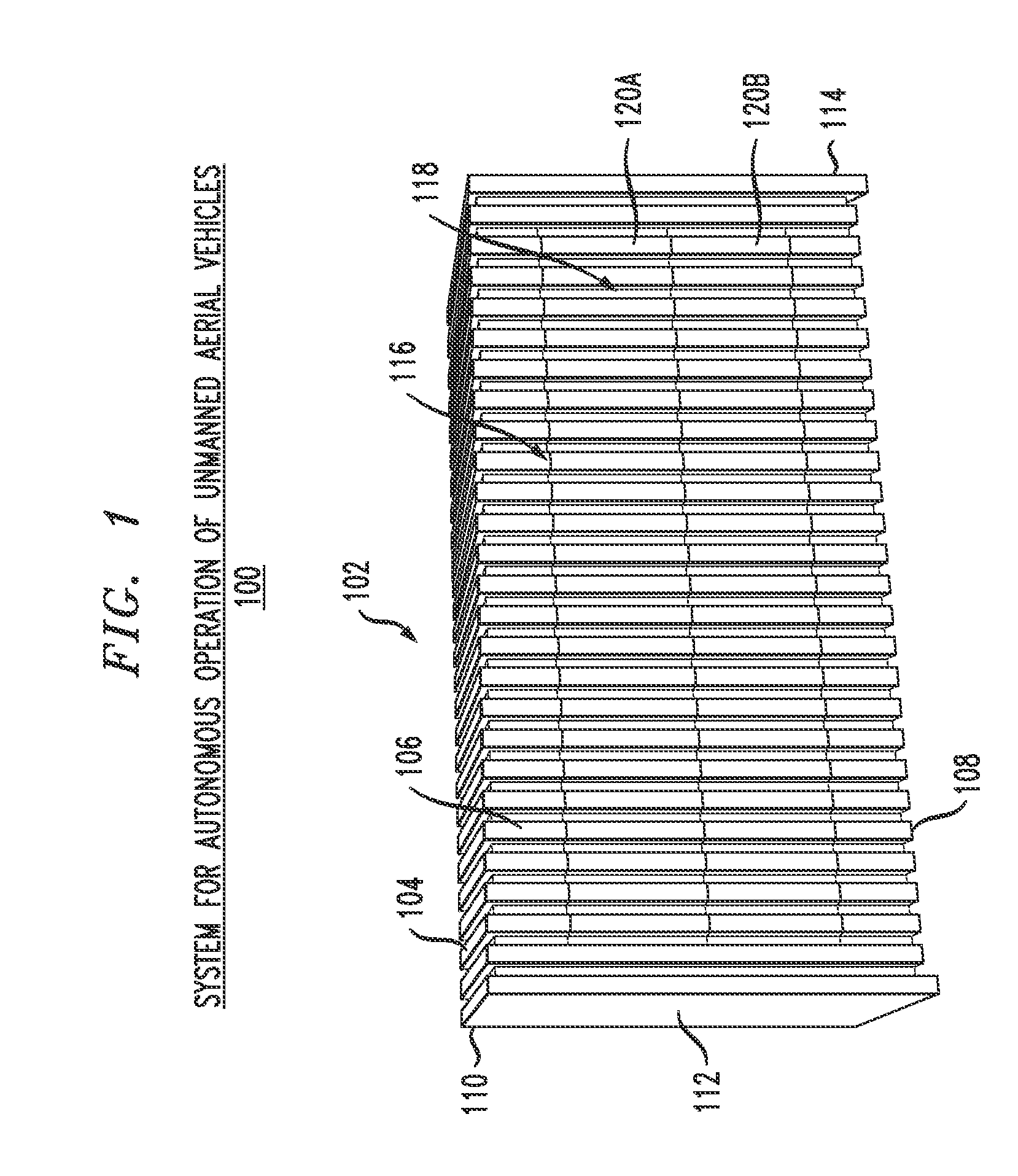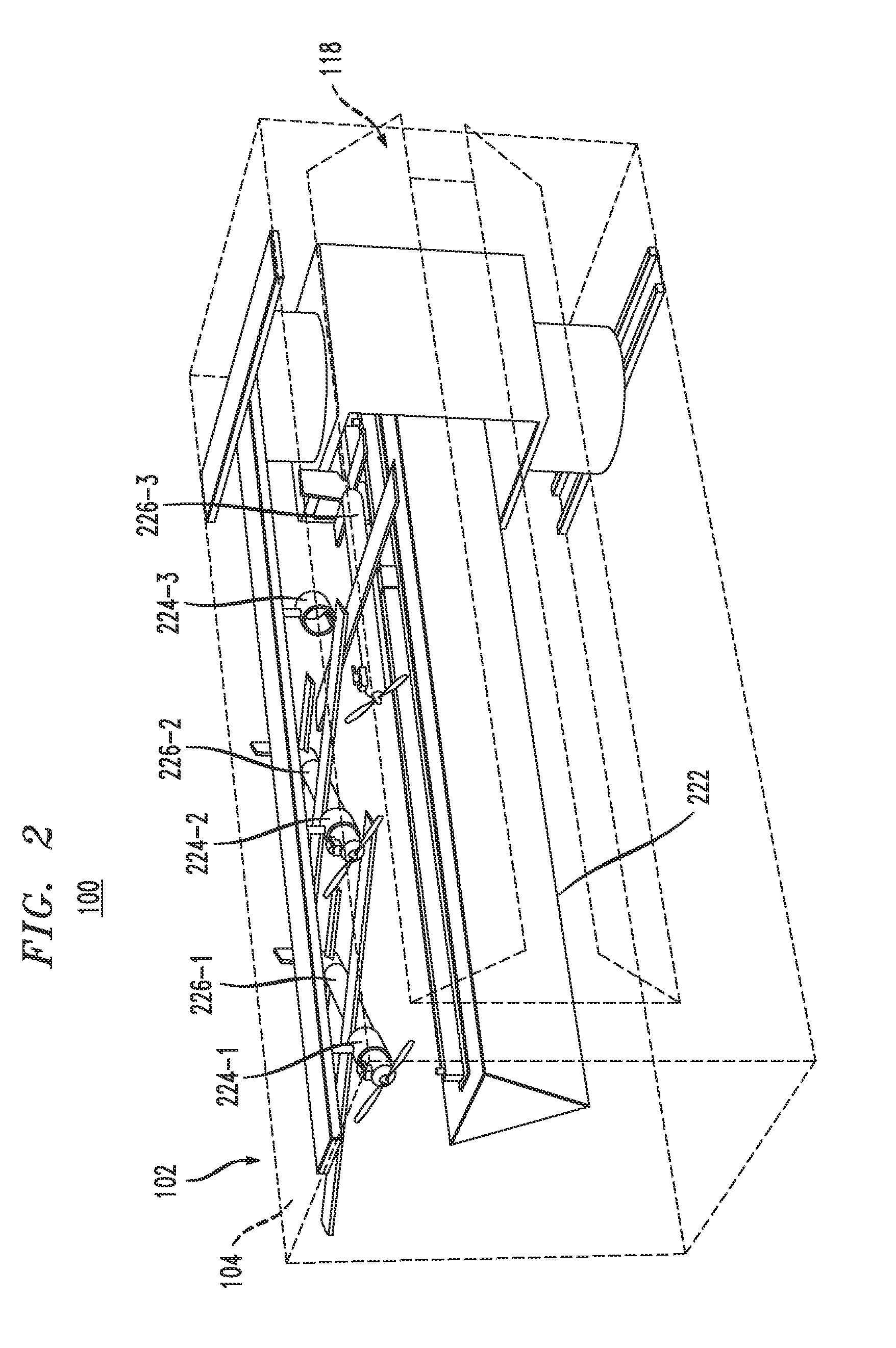Systems and Methods for Autonomous Operations of Unmanned Aerial Vehicles
a technology of autonomous operation and unmanned aerial vehicles, applied in the field can solve the problems of limited utility of unmanned aerial vehicles, high cost of human intervention, and inability to carry, and achieve the effect of enhancing the survivability of auos
- Summary
- Abstract
- Description
- Claims
- Application Information
AI Technical Summary
Benefits of technology
Problems solved by technology
Method used
Image
Examples
Embodiment Construction
[0031]The following terms are defined for use in this disclosure and in the accompanying claims:[0032]The term “intermodal container” or “freight container” or “shipping container” is well-known in the art as a transport and storage box commonly used in shipping, whether by ship, train, truck, or another mode of transportation. See, e.g., Wikipedia online, Intermodal container, http: / / en.wikipedia.org / wiki / Intermodal_container (last visited Sep. 1, 2010). Intermodal containers are dimensioned in industry-standard measurements that differ slightly among manufacturers, but which nevertheless are understood to be of “standard” sizes.[0033]The term “operatively coupled” means that the operation of one element or device affects another device, wherein the devices need not be physically coupled. For example, a laser and a mirror are operatively coupled if a laser directs a beam of light to the mirror.[0034]The term “physically connected” or “physically coupled” means in direct physical co...
PUM
 Login to View More
Login to View More Abstract
Description
Claims
Application Information
 Login to View More
Login to View More - R&D
- Intellectual Property
- Life Sciences
- Materials
- Tech Scout
- Unparalleled Data Quality
- Higher Quality Content
- 60% Fewer Hallucinations
Browse by: Latest US Patents, China's latest patents, Technical Efficacy Thesaurus, Application Domain, Technology Topic, Popular Technical Reports.
© 2025 PatSnap. All rights reserved.Legal|Privacy policy|Modern Slavery Act Transparency Statement|Sitemap|About US| Contact US: help@patsnap.com



